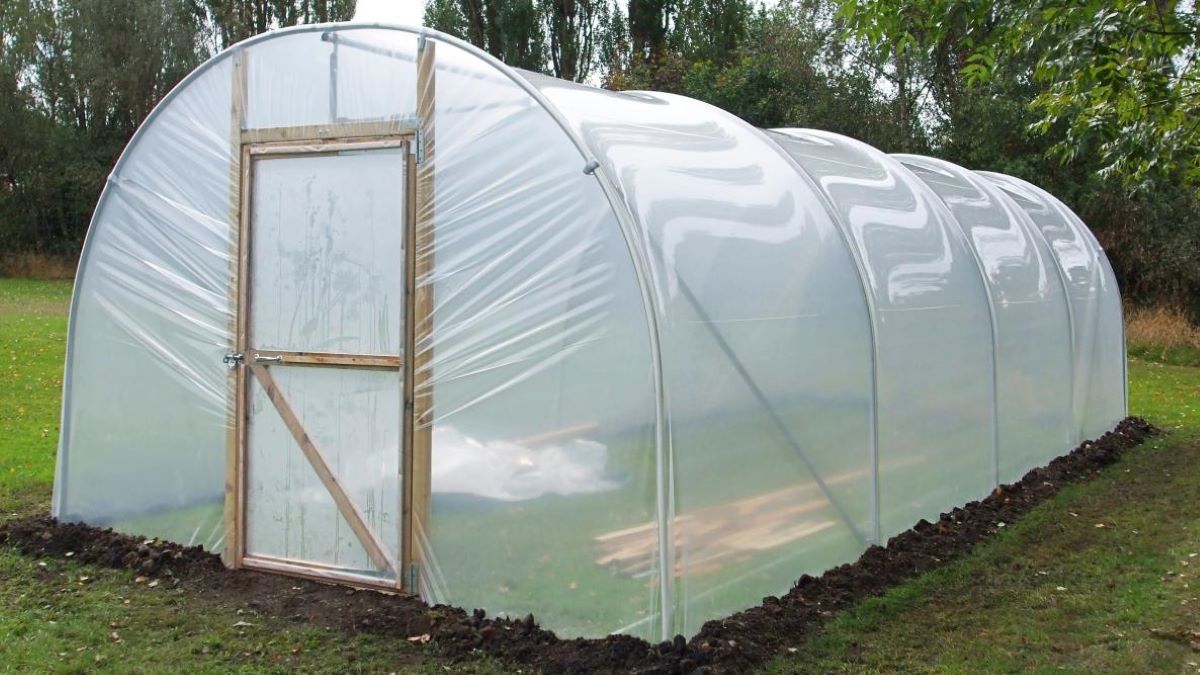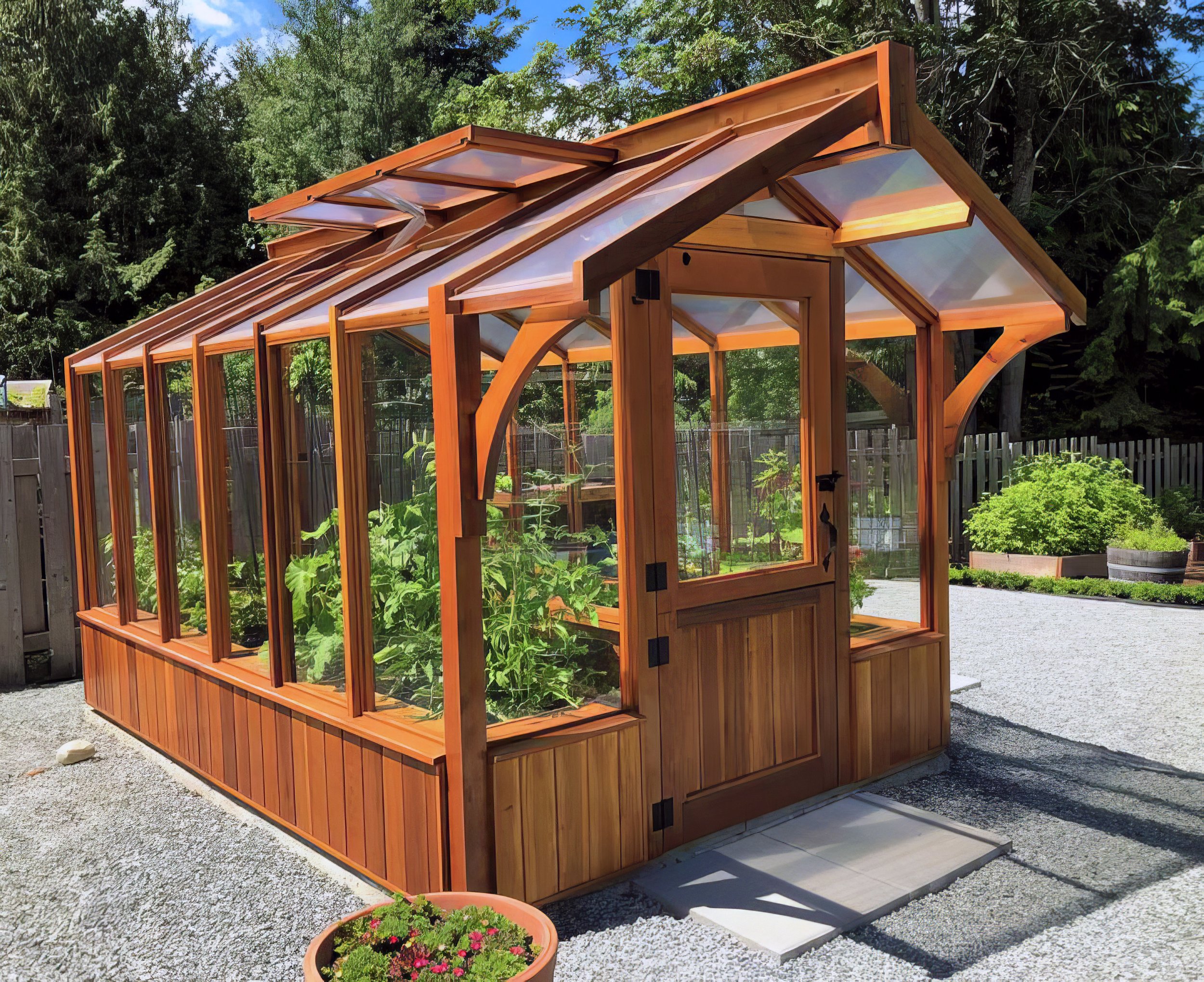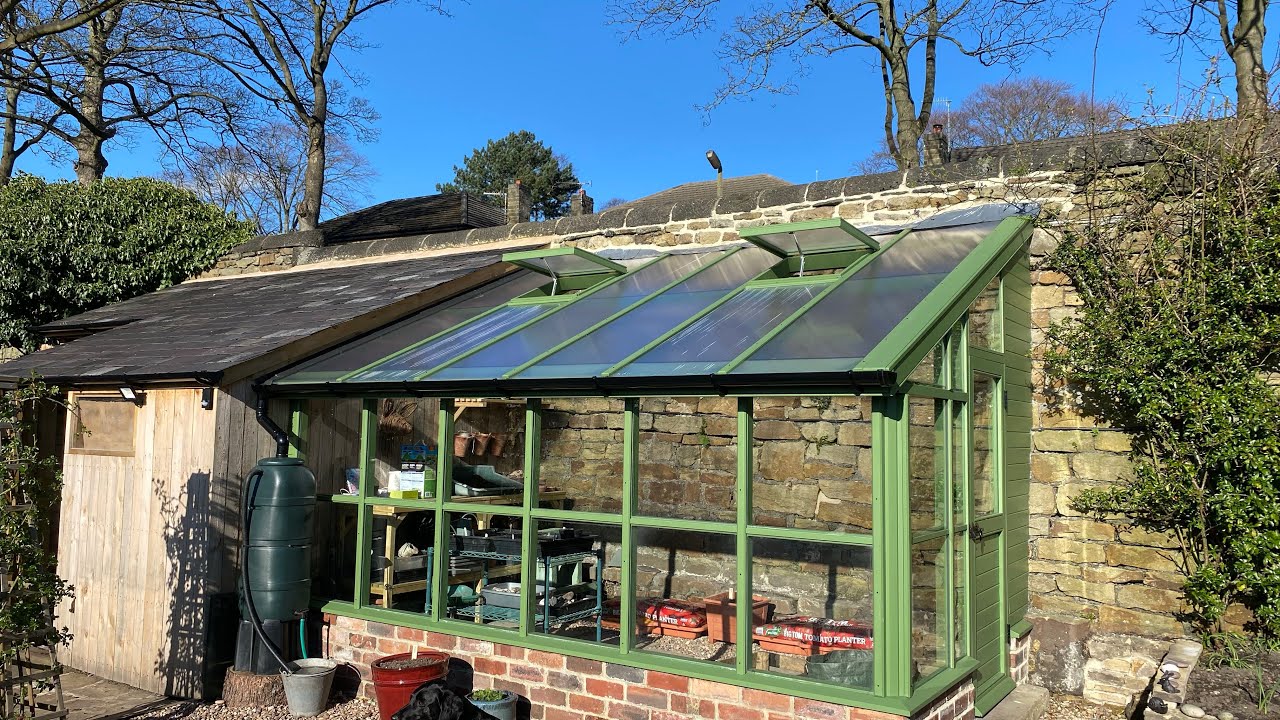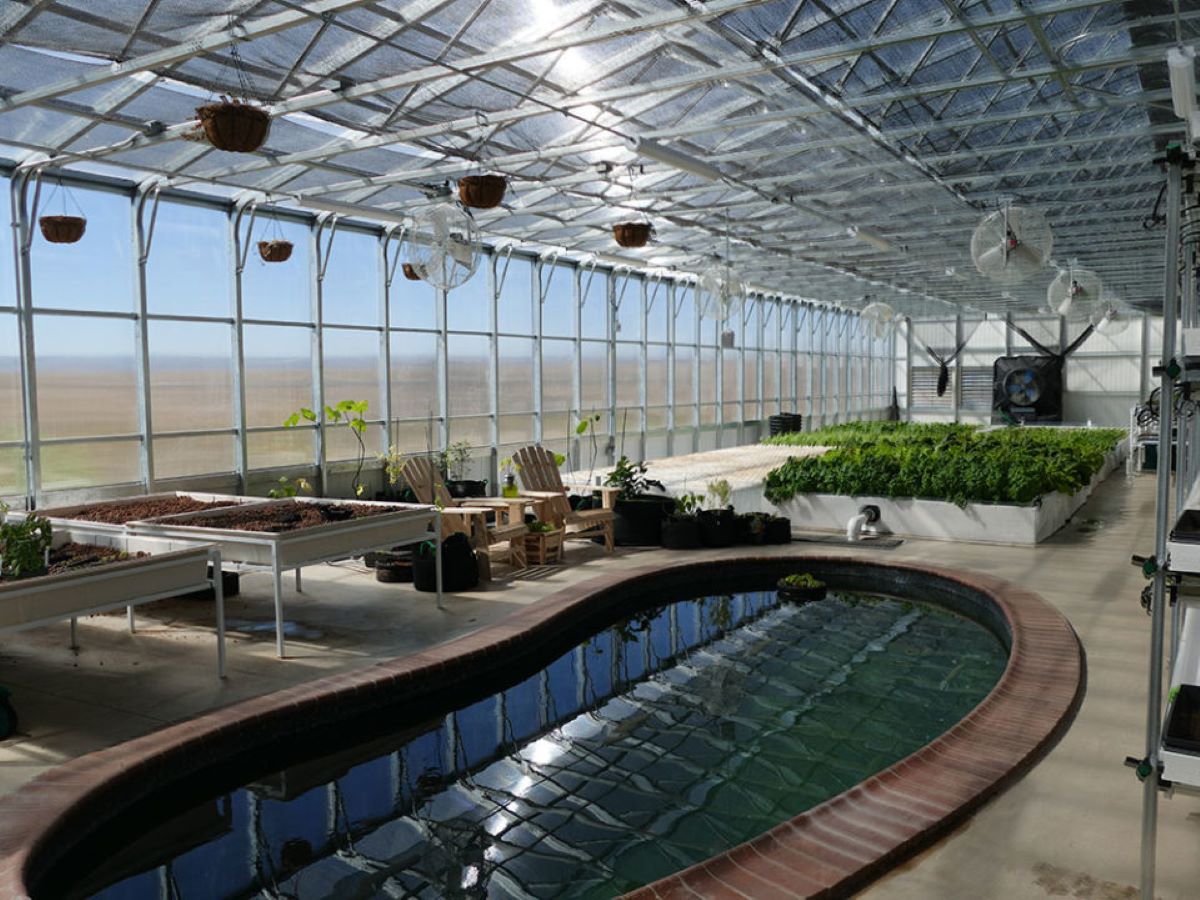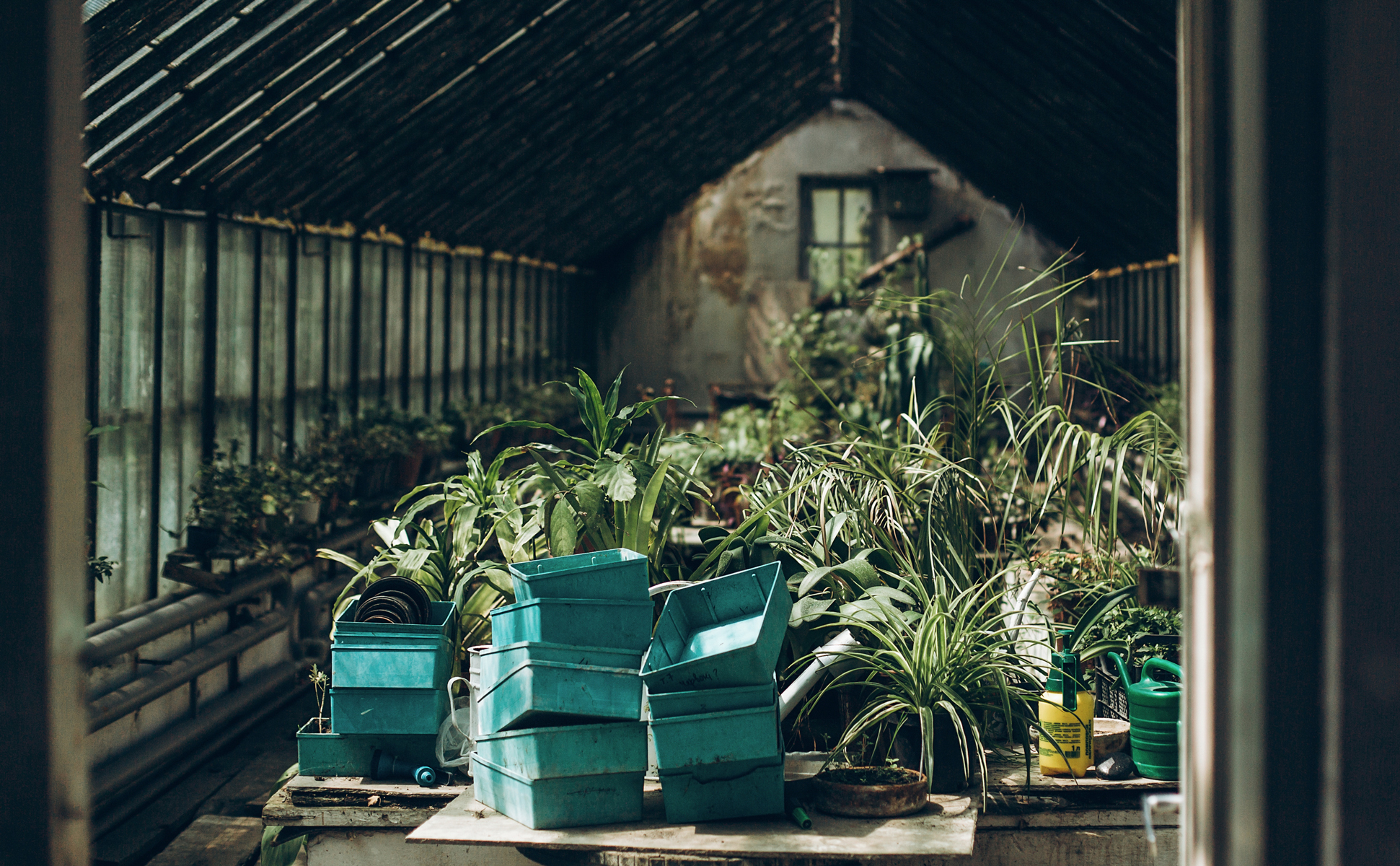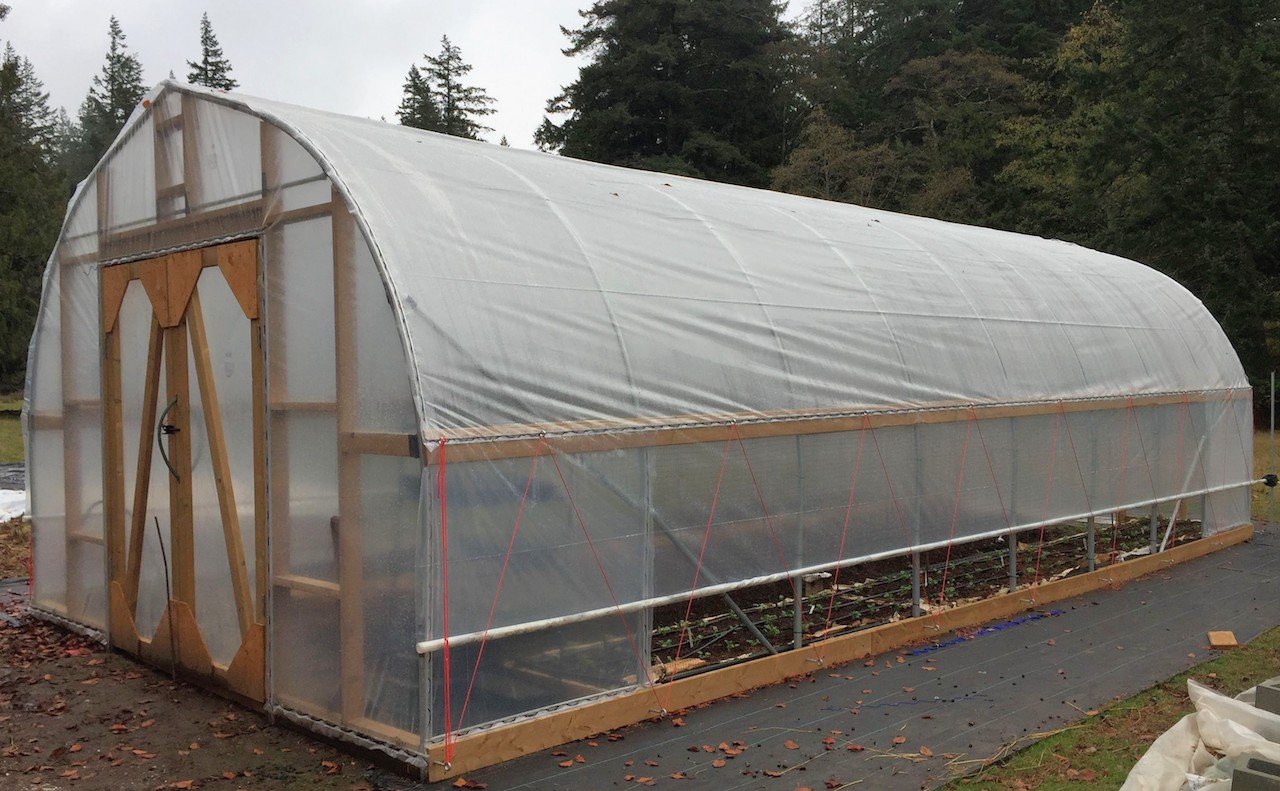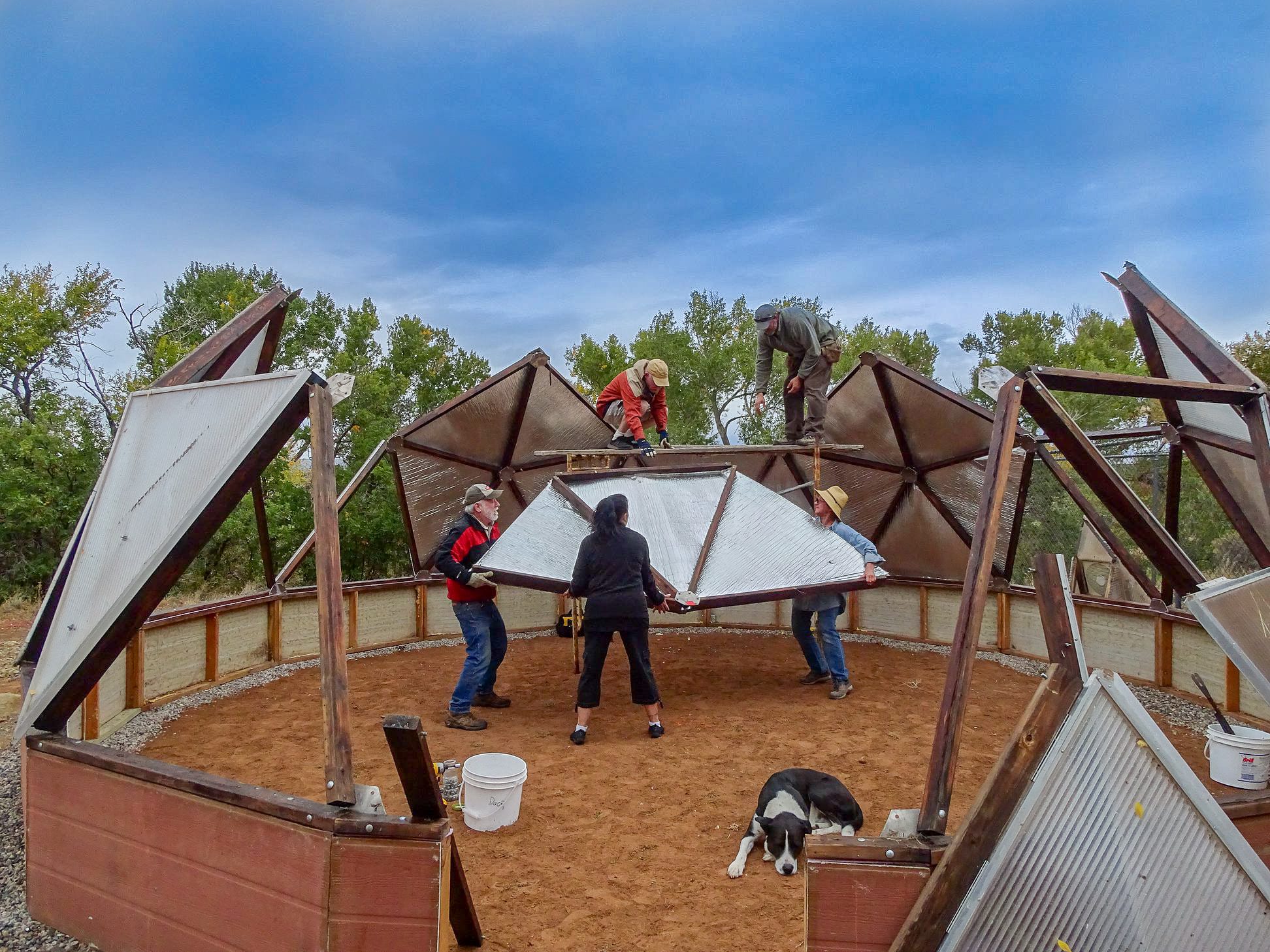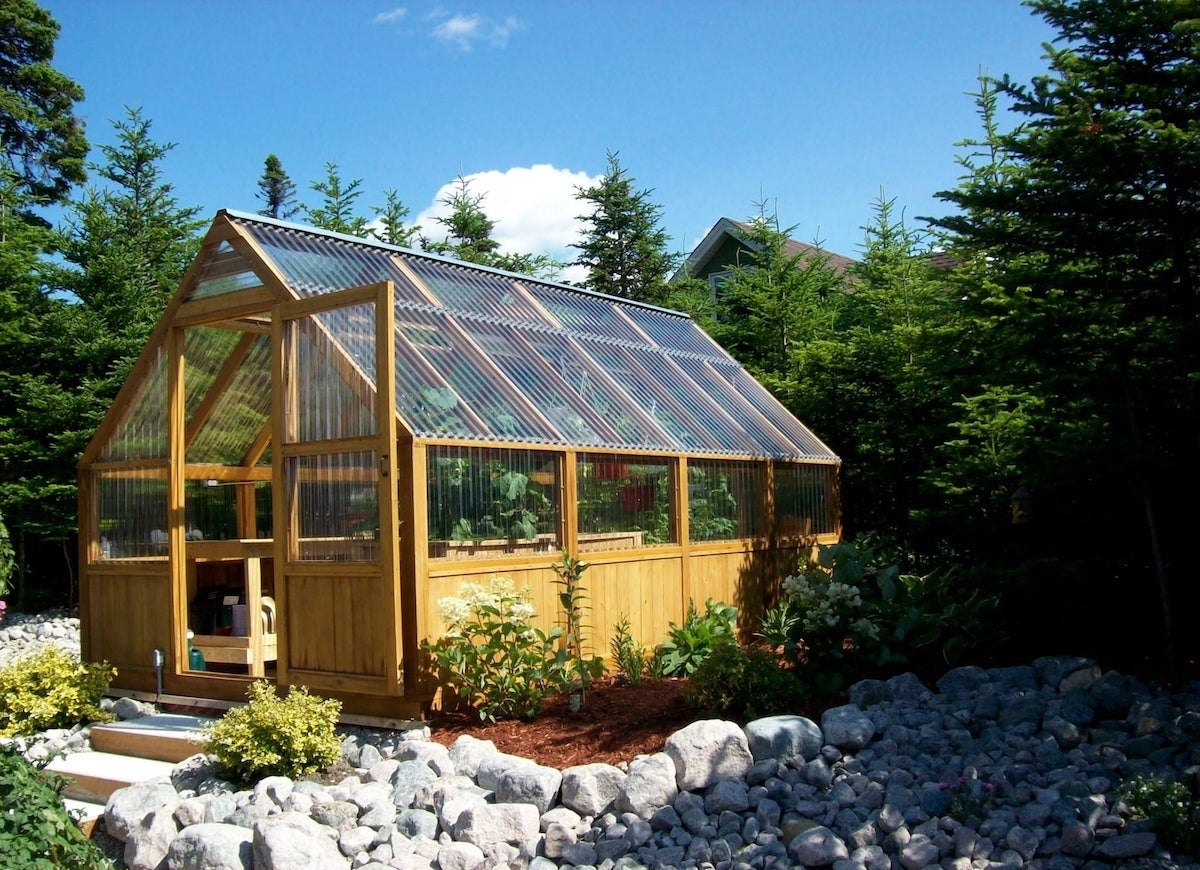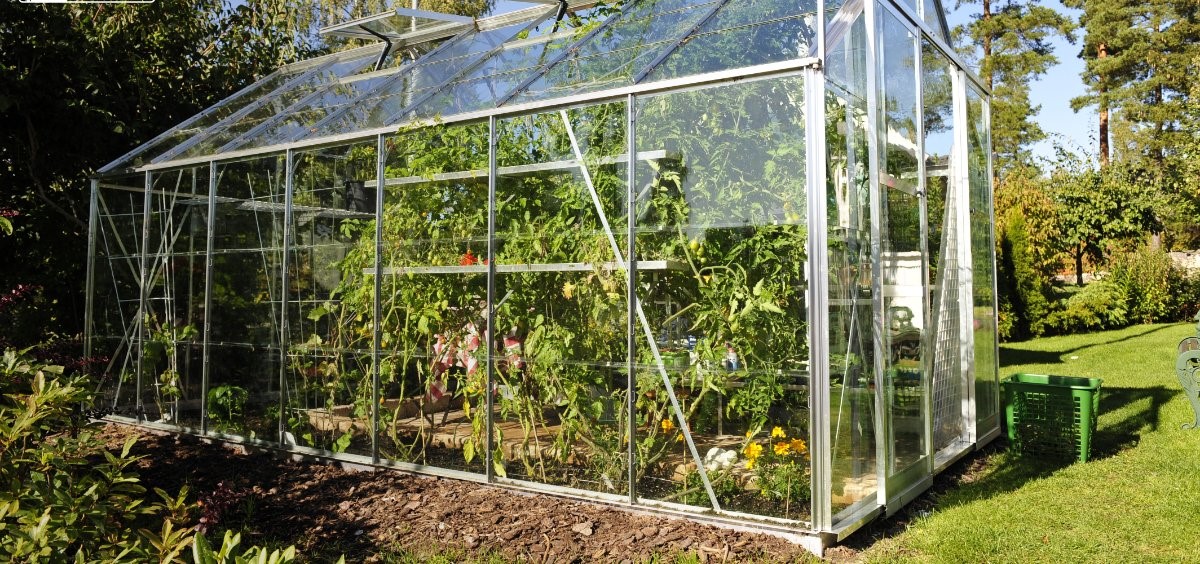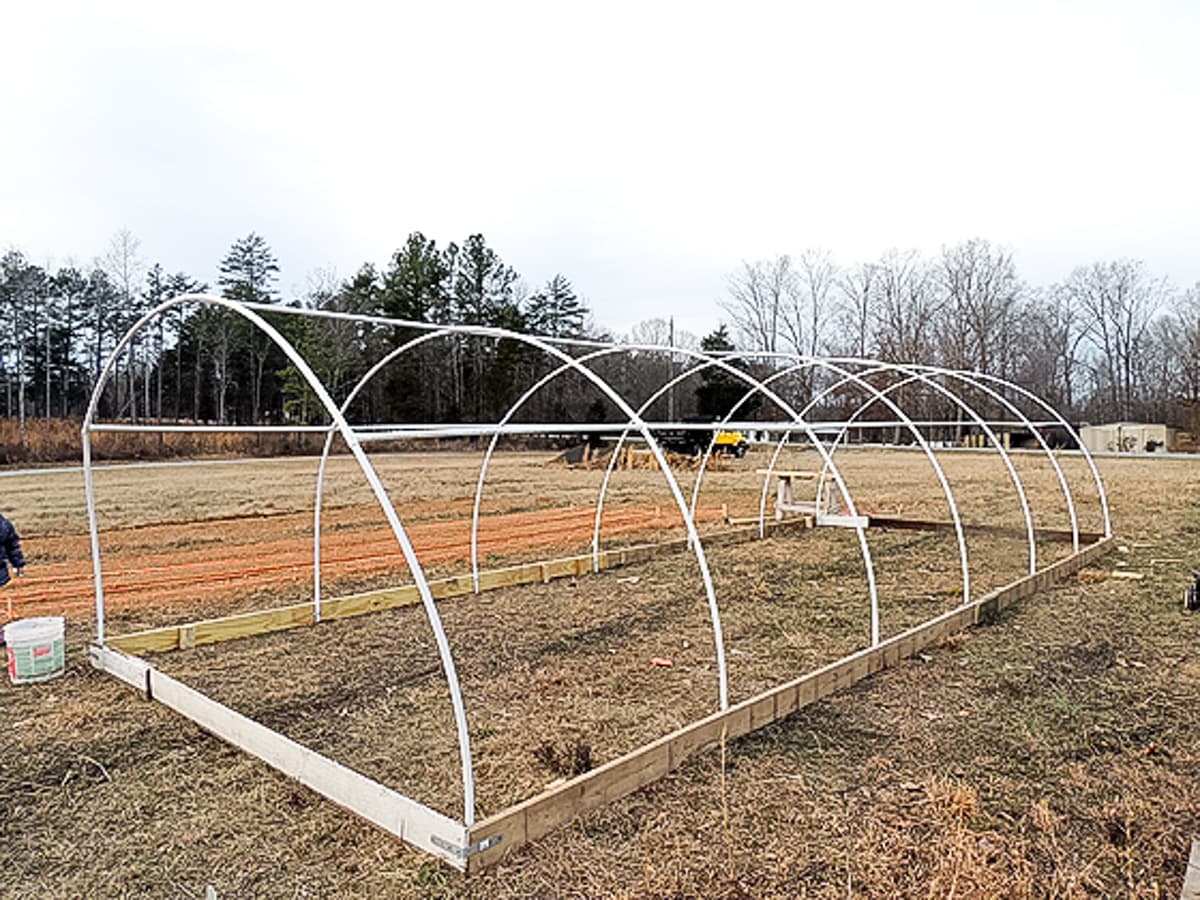Home>Gardening Techniques>DIY Projects>How To Build A Solar Powered Greenhouse
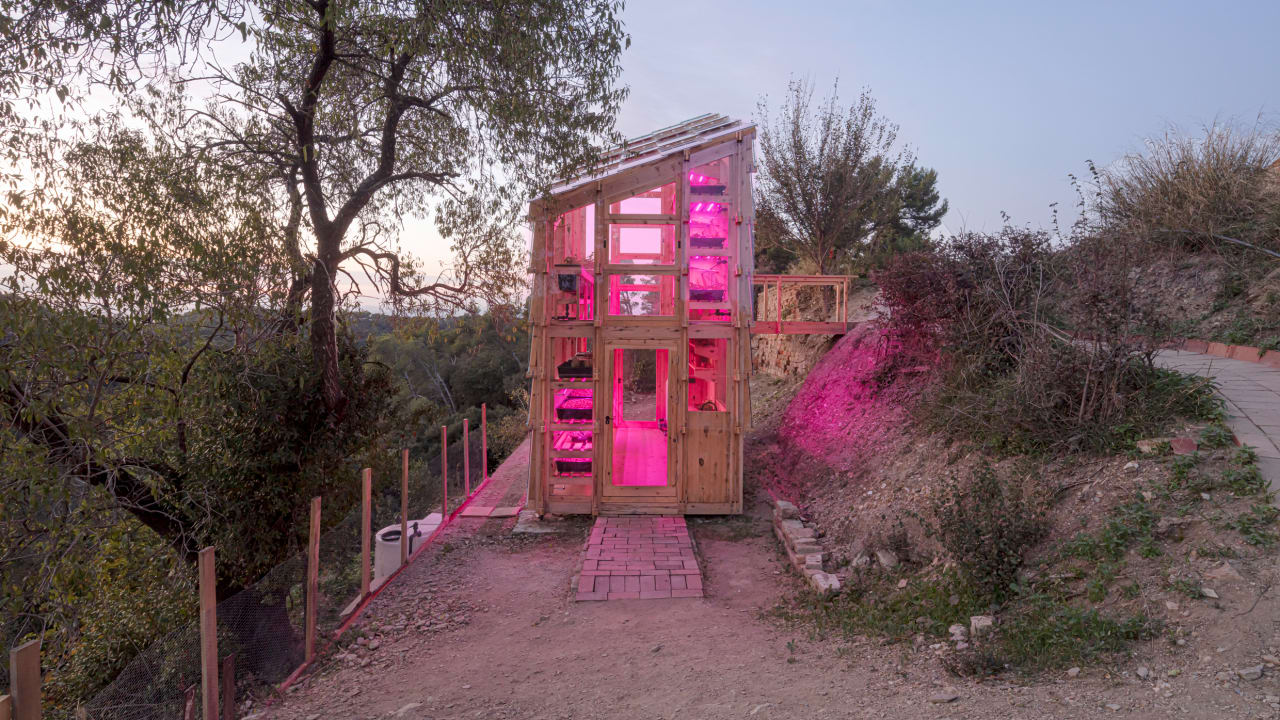

DIY Projects
How To Build A Solar Powered Greenhouse
Modified: January 22, 2024
Learn how to build a solar-powered greenhouse with this DIY project guide. Create an eco-friendly space and grow your own plants with renewable energy.
(Many of the links in this article redirect to a specific reviewed product. Your purchase of these products through affiliate links helps to generate commission for Chicagolandgardening.com, at no extra cost. Learn more)
Table of Contents
- Introduction
- Benefits of a Solar Powered Greenhouse
- Assessing the Site for Your Greenhouse
- Designing the Structure and Layout
- Choosing the Right Materials
- Installing Solar Panels
- Wiring and Battery Setup
- Heating and Cooling Systems
- Ventilation and Air Circulation
- Irrigation and Water Management
- Monitoring and Maintenance
- Conclusion
Introduction
Welcome to the world of DIY projects! If you’re looking for a fun and rewarding project that combines sustainability and gardening, building a solar powered greenhouse might be just what you’re looking for. With a solar powered greenhouse, you can harness the power of the sun to create a sustainable and environmentally friendly space for growing plants.
A solar powered greenhouse is not only a great way to extend your growing season and protect your plants from harsh weather conditions, but it also allows you to reduce your reliance on fossil fuels and lower your carbon footprint. By utilizing renewable energy from the sun, you can create a self-sufficient and energy-efficient growing environment.
In this article, we will guide you through the process of building a solar powered greenhouse from start to finish. From assessing the site to designing the structure, from installing solar panels to setting up the electrical system, we will cover all the essential steps and considerations. So, whether you’re a seasoned gardener or a DIY enthusiast, get ready to roll up your sleeves and embark on this exciting green journey!
Benefits of a Solar Powered Greenhouse
A solar powered greenhouse offers a plethora of benefits for both the environment and the avid gardener. Here are some key advantages to consider:
- Energy Efficiency: By harnessing the power of the sun, a solar powered greenhouse operates on renewable energy, reducing your reliance on traditional energy sources. This not only decreases your carbon footprint but also saves on utility costs in the long run.
- Extended Growing Season: One of the main advantages of a greenhouse is the ability to extend the growing season. With a solar powered greenhouse, you can optimize the growing conditions, allowing you to start planting earlier in the spring and continue growing later into the fall or even year-round.
- Protection from Harsh Weather: A solar powered greenhouse provides a controlled environment, shielding your plants from extreme weather conditions such as frost, snow, hail, or high winds. This protection ensures consistent growth and helps prevent crop losses due to unpredictable weather patterns.
- Control over Growing Conditions: With a solar powered greenhouse, you have complete control over the growing conditions. You can adjust the temperature, humidity, and lighting to meet the specific needs of different plants, creating an optimal environment for growth. This control allows you to cultivate a wider variety of plants throughout the year.
- Sustainable and Organic Farming: If you’re passionate about sustainable and organic farming practices, a solar powered greenhouse aligns perfectly with your goals. By relying on renewable energy and minimizing the use of synthetic fertilizers and pesticides, you can grow healthy and chemical-free produce.
- Increase in Crop Yield: The controlled environment of a solar powered greenhouse provides ideal conditions for plants, resulting in increased crop yields. With proper temperature, lighting, and humidity levels, your plants can thrive and produce higher quantities of fruits, vegetables, and herbs.
- Year-round Gardening: With a solar powered greenhouse, you can indulge in your gardening hobby all year round. Regardless of the weather outside, you can step into your greenhouse and tend to your plants, enjoying the therapeutic benefits of gardening even during the colder months.
These are just a few of the many benefits that come with building a solar powered greenhouse. From energy efficiency to increased crop yield, this sustainable gardening solution allows you to create an ideal growing environment and contribute to a greener future.
Assessing the Site for Your Greenhouse
Before diving into the construction of your solar powered greenhouse, it’s important to assess the site where it will be installed. Taking the time to evaluate the location will ensure optimal growing conditions and maximize the benefits of your greenhouse. Here are some key factors to consider:
- Sun Exposure: Choose a site that receives full sun exposure for the majority of the day. The greenhouse should be free from any obstructions, such as trees or buildings, that may cast shadows and limit the amount of sunlight that reaches the plants. This will allow your solar panels to capture the maximum amount of solar energy.
- Drainage: Ensure that the site has proper drainage to prevent water accumulation around the greenhouse. Excess water can lead to root rot and other plant diseases. It’s also crucial to avoid areas prone to flooding, as this can cause significant damage to both the greenhouse and your plants.
- Access to Water: Consider the proximity of a water source to the greenhouse. Having a convenient and reliable source of water nearby will make irrigation and watering tasks much easier and more efficient.
- Wind Exposure: Evaluate the wind patterns in your area. Avoid locations that are excessively windy, as strong gusts can damage the structure of the greenhouse and stress the plants. If wind exposure is unavoidable, consider incorporating windbreaks or choosing a wind-resistant design.
- Space Availability: Take into account the size of your property and the available space for the greenhouse. Ensure that the site provides sufficient room for the desired greenhouse size, as well as space for walkways, storage, and any additional features you plan to incorporate.
- Local Regulations: Check with your local authorities regarding any building codes, permits, or zoning restrictions that may apply to constructing a greenhouse. Ensure that you comply with all the necessary regulations to avoid any potential issues in the future.
By carefully assessing the site for your solar powered greenhouse, you can choose an ideal location that optimizes sun exposure, provides proper drainage, and offers easy access to water. Taking these factors into consideration will set the foundation for a successful and thriving greenhouse.
Designing the Structure and Layout
The design of your solar powered greenhouse plays a crucial role in maximizing its functionality and efficiency. Consider the following factors when designing the structure and layout:
- Size and Shape: Determine the size of the greenhouse based on your gardening needs, available space, and budget. Consider the types of plants you plan to grow and ensure that the greenhouse provides enough room for their growth. Additionally, choose a shape that suits your aesthetic preferences and allows for efficient use of materials.
- Orientation: Proper orientation of the greenhouse is essential to make the most of the available sunlight. Align the longer side of the greenhouse in an east-west direction to maximize sun exposure throughout the day. This will ensure that plants receive adequate light from sunrise to sunset.
- Materials: Select durable and insulating materials for the greenhouse structure. Common options include glass, polycarbonate panels, or polyethylene film. Consider factors such as insulation properties, light transmission, and cost when choosing the materials. Additionally, use weather-resistant materials that can withstand various weather conditions.
- Foundation: A sturdy foundation is essential for the greenhouse’s stability and longevity. Whether you choose to build a concrete foundation or use anchor posts, ensure that it provides adequate support for the structure. Take soil composition and drainage into account when deciding on the foundation type.
- Layout and Organization: Plan the layout of the interior space to optimize functionality and ease of access. Consider the placement of workbenches, shelves, and storage areas. Allocate space for walkways to allow easy movement and maintenance. The design should promote efficient workflow and provide ample space for plants to thrive.
- Doors and Ventilation: Incorporate doors that provide convenient access to the greenhouse, allowing for easy entry and exit. Proper ventilation is essential for regulating temperature and humidity levels. Install windows or vents that can be opened and closed as needed to maintain optimal growing conditions.
- Consider Future Expansion: Anticipate the possibility of future expansion and design the greenhouse structure accordingly. Leave room for potential growth and modifications that may be required as your gardening needs evolve over time.
Take your time to carefully design the structure and layout of your solar powered greenhouse. A well-planned design will ensure efficient use of space, optimal sun exposure, and a functional layout that enhances productivity and enjoyment.
Choosing the Right Materials
When it comes to building a solar powered greenhouse, choosing the right materials is crucial for its durability, functionality, and energy efficiency. Here are some factors to consider when selecting materials:
- Glazing Materials: The glazing material used for the walls and roof of the greenhouse is important for light transmission and insulation. Glass provides excellent light transmission and durability, but it can be costly. Polycarbonate panels are a popular alternative that offer good insulation and are more affordable. Polyethylene film is a budget-friendly option, but it may need to be replaced more frequently.
- Frame Materials: The frame provides the structural support for the greenhouse. Common options include wood, aluminum, and galvanized steel. Wood is a traditional and natural choice, but it requires regular maintenance. Aluminum is lightweight and durable, but it can be more expensive. Galvanized steel is strong and resistant to rust, but it may be prone to heat transfer.
- Flooring Materials: Choose a flooring material that is durable, easy to clean, and provides good traction. Concrete, gravel, or pavers are popular choices. Consider installing a drainage system to prevent water accumulation on the floor.
- Insulation Materials: Insulation is important for regulating temperature and minimizing heat loss. Common insulation materials include fiberglass, polystyrene foam, or bubble wrap. Choose insulation with a high R-value to enhance energy efficiency.
- Shading Materials: To prevent overheating during hot summer months, consider using shading materials such as shade cloth or blinds. These materials can be easily adjusted to control the amount of light and heat entering the greenhouse.
- Waterproofing Materials: Ensure that the greenhouse is properly waterproofed to protect the structure and plants from moisture damage. Use waterproof sealants, weather stripping, or greenhouse tape to seal any gaps or joints.
- Additional Features: Depending on your needs, consider incorporating additional features such as automatic vent openers, shade systems, or misting systems. These features enhance the functionality and efficiency of the greenhouse.
Research and compare different material options based on their cost, durability, energy efficiency, and suitability for your specific greenhouse design. Don’t forget to consider your budget, local climate, and maintenance requirements when making your final material selections.
Installing Solar Panels
The installation of solar panels is a critical step in creating a truly solar powered greenhouse. Here is a step-by-step guide to help you successfully install the solar panels:
- Determine Power requirements: Assess your power needs based on the size of your greenhouse, the types of equipment you will be using, and the desired level of energy independence. Calculate the wattage requirement and determine the number of solar panels needed.
- Select the right solar panels: Choose high-quality solar panels that offer optimal efficiency and durability. Consider factors such as energy output, warranty, and compatibility with your specific electrical system.
- Calculate solar panel placement: Determine the ideal placement of the solar panels to maximize exposure to sunlight. The panels should receive direct sunlight for the majority of the day. Avoid shading from nearby trees, buildings, or any other obstructions.
- Prepare the mounting structure: Install a sturdy and weather-resistant mounting structure for the solar panels. This can be attached to the roof or constructed as a stand-alone structure adjacent to the greenhouse. Ensure that the structure is properly grounded for safety purposes.
- Install the solar panels: Follow the manufacturer’s instructions for mounting the solar panels onto the mounting structure. Secure them firmly to withstand strong winds and other weather conditions. Connect the panels to each other and to the electrical system using appropriate connectors and cables.
- Wire the solar panels: Connect the solar panels to a charge controller, which regulates the flow of electricity from the panels. From the charge controller, connect the panels to a battery bank to store excess energy for use during times of low sunlight.
- Connect to the electrical system: If desired, connect the solar panel system to the main electrical system of the greenhouse. This allows you to power lights, fans, heaters, or other electrical devices directly from the solar energy generated.
- Ensure proper wiring and safety: It is crucial to ensure proper wiring and adherence to electrical safety practices when installing the solar panels. If you are unsure, consult a licensed electrician to ensure everything is installed correctly and safely.
- Monitor and maintain the solar panels: Regularly monitor the performance of the solar panels and their connection to the electrical system. Clean the panels as needed to ensure optimal sun absorption. Also, check for any damage or malfunctions that may require repair or replacement.
By carefully following these steps, you can successfully install solar panels that will provide clean and renewable energy to power your greenhouse. Harnessing the power of the sun will not only reduce your environmental impact but also help you save on electricity bills in the long run.
Wiring and Battery Setup
Proper wiring and battery setup are essential components of a functional solar powered greenhouse. Here are the key steps to follow:
- Design the electrical system: Determine the electrical needs of your greenhouse, including lights, fans, irrigation systems, and any other equipment you plan to use. Create a wiring diagram to establish the layout and connections for the electrical components.
- Choose the right wires: Select wires of the appropriate gauge to handle the current load. Use high-quality, weatherproof cables suitable for outdoor use. Consult electrical codes and regulations to ensure compliance and safety.
- Wire the solar panels: Connect the solar panels to a charge controller using appropriate cables and connectors. The charge controller regulates the flow of electricity from the panels to the batteries, preventing overcharging and discharging.
- Install the battery bank: Set up a battery bank to store excess energy produced by the solar panels. Choose deep cycle batteries designed for renewable energy systems. Install the batteries in a well-ventilated and secure location, following manufacturer guidelines.
- Connect the batteries: Connect the batteries in series or parallel configuration to achieve the desired voltage and capacity. Use properly sized cables and connectors to ensure efficient energy transfer between the batteries.
- Install an inverter: If you plan to use AC-powered equipment, such as lights or heaters, install an inverter to convert DC power from the batteries into AC power. Select an inverter of appropriate size and capacity based on your electrical needs.
- Wire the electrical components: Connect the lights, fans, pumps, and other electrical devices to the electrical system. Ensure proper grounding and insulation to prevent electrical hazards. Label all connections for easy identification and maintenance.
- Include safety features: Install appropriate safety mechanisms, such as circuit breakers and surge protectors, to protect the electrical system from power surges or overloads. Follow electrical codes and regulations to ensure the safety of your greenhouse and its occupants.
- Test and troubleshoot: Once the wiring and battery setup is complete, test the system to ensure proper operation. Monitor the battery voltage, charging status, and overall performance. If any issues arise, troubleshoot the system to identify and resolve the problem.
Proper wiring and battery setup are crucial to ensure the efficient functioning of a solar powered greenhouse. By following these steps and consulting professionals, if needed, you can create a safe and reliable electrical system that powers your greenhouse with clean and sustainable energy.
Heating and Cooling Systems
Implementing an effective heating and cooling system is essential for maintaining optimal temperature levels within your solar powered greenhouse. Here are some key considerations when selecting and setting up these systems:
- Assess your climate: Understand the climate conditions in your area to determine the heating and cooling needs of your greenhouse. Consider temperature ranges, humidity levels, and any extreme weather events that may occur.
- Passive heating and cooling: Incorporate passive strategies to naturally heat or cool the greenhouse. This can include features such as insulation, thermal mass (such as water barrels or concrete flooring), and proper ventilation to take advantage of natural air circulation.
- Heating options: Explore different heating options based on your climate and budget. Common heating methods include propane or natural gas heaters, electric heaters, wood-burning stoves, or radiant floor heating. Choose a system that is efficient, safe, and suitable for your greenhouse’s size and insulation.
- Cooling options: Select cooling mechanisms to regulate temperature and humidity levels within the greenhouse. This can include natural ventilation through windows or vents, evaporative cooling systems, or fans for air circulation. Consider the airflow requirements and the efficiency of each cooling method.
- Automate temperature control: Install a thermostat or a greenhouse controller to automate temperature control. This allows for precision in maintaining the desired temperature range, especially during challenging weather conditions. Connect the thermostat to your heating and cooling systems for seamless operation.
- Consider energy efficiency: Opt for energy-efficient heating and cooling systems to minimize energy consumption. Look for Energy Star-rated appliances and consider incorporating renewable energy sources, such as solar-powered fans or geothermal heating systems.
- Insulation: Proper insulation is critical for preventing heat loss during colder months and heat gain during warmer months. Insulate the greenhouse walls, roof, and even the foundation using materials such as polystyrene foam or double-glazed panels.
- Regular maintenance: Schedule regular maintenance for your heating and cooling systems. Clean filters, inspect fans and motors, and ensure efficient operation. Promptly address any issues or malfunctions to avoid disruptive temperature fluctuations.
- Consider climate control accessories: Depending on your needs and budget, you may also want to explore additional climate control accessories, such as shading systems, misting systems, or humidity sensors. These can further enhance the performance and efficiency of your heating and cooling systems.
By carefully considering your climate, selecting appropriate heating and cooling systems, and incorporating energy-saving measures, you can create a well-controlled environment in your solar powered greenhouse. This will allow your plants to thrive and grow throughout the year, regardless of external temperature variations.
Ventilation and Air Circulation
Proper ventilation and air circulation are essential for maintaining a healthy growing environment in your solar powered greenhouse. By ensuring adequate airflow, you can regulate temperature, control humidity levels, and prevent the buildup of pests and diseases. Here are some key considerations for ventilation and air circulation:
- Natural ventilation: Incorporate windows, vents, or louvers to allow for natural airflow. Position them strategically to take advantage of prevailing winds and optimize cross-ventilation within the greenhouse.
- Mechanical ventilation: Install fans or exhaust systems to enhance air movement within the greenhouse. This helps in distributing heat or cool air more evenly and ensures that stagnant air is constantly refreshed.
- Automatic ventilation: Consider using automated systems that can open and close windows or vents based on temperature and humidity levels. This helps maintain optimal growing conditions even when you’re not physically present.
- Air circulation fans: Place circulation fans strategically to ensure air movement throughout the greenhouse. This prevents stagnant air pockets and helps distribute heat, humidity, and carbon dioxide more evenly to the plants.
- Shade and cooling systems: Utilize shade systems, such as shade cloth or shade paint, to prevent excessive heat buildup during the warmer months. Additionally, consider evaporative cooling systems or misting systems to enhance cooling and humidity control.
- Optimal vent placement: Position vents or louvers near the roof or top of the greenhouse to allow hot air to rise and escape. Place intake vents near the floor to draw in cooler air. This creates a natural flow of air, with cooler air entering from below, circulating around the plants, and warmer air exiting from above.
- Proper sealing: Ensure that the greenhouse is properly sealed to prevent air leaks. Inspect windows, doors, and any other openings regularly, and seal any gaps or cracks that may allow unwanted air infiltration.
- Monitor humidity levels: Install humidity sensors or hygrometers to monitor and maintain appropriate humidity levels within the greenhouse. High humidity can promote fungal diseases, while low humidity can cause stress to the plants.
- Cleanliness and pest control: Regularly clean and maintain the greenhouse to prevent the buildup of debris, which can impede proper airflow. Implement proper pest control measures to minimize the risk of pests that can disrupt air circulation and damage the plants.
By implementing proper ventilation and air circulation systems, you can create a well-ventilated and oxygen-rich environment for your plants. This ensures that they receive the necessary fresh air, helping to maintain their health and optimize their growth.
Irrigation and Water Management
Proper irrigation and water management are key factors in maintaining healthy and thriving plants in your solar powered greenhouse. Consistent and well-controlled watering ensures that your plants receive the right amount of moisture, promoting growth and preventing water-related issues. Here are some considerations for effective irrigation and water management:
- Assess water requirements: Understand the watering needs of different plant species in your greenhouse. Consider factors such as plant type, stage of growth, and environmental conditions when determining the frequency and amount of water required.
- Irrigation methods: Choose the most suitable irrigation method for your plants and greenhouse setup. Options include drip irrigation, soaker hoses, overhead sprinklers, or misting systems. Each method has its advantages and ensures water efficiency.
- Avoid water stress: Consistently monitor the soil moisture levels to prevent water stress in your plants. Too much or too little water can be detrimental to their health. Use moisture sensors or test the soil regularly to determine when watering is needed.
- Develop a watering schedule: Establish a regular watering schedule that aligns with the specific needs of your plants. Take into account factors such as plant maturity, weather patterns, and seasonal variations. Ensure that your watering schedule is adaptable to changing conditions.
- Consider water quality and filtration: Pay attention to the quality of the water used for irrigation. If necessary, use filtration systems to remove impurities and maintain a consistent pH level. This ensures that your plants receive clean and suitable water for their growth.
- Water-saving techniques: Implement water-saving techniques to optimize efficiency. Use mulch around plants to reduce evaporation, group plants with similar water requirements, and collect rainwater or condensation to supplement your irrigation needs.
- Avoid waterlogged soil: Ensure proper drainage in your greenhouse to prevent waterlogging. Implement a well-designed drainage system or use raised beds to allow excess water to flow out of the growing area. This helps prevent root rot and other water-related issues.
- Manage humidity levels: Proper water management helps control humidity levels within the greenhouse. High humidity can lead to fungal diseases, while low humidity can cause stress to plants. Use proper ventilation and consider installing dehumidifiers if necessary.
- Monitor and adjust: Regularly monitor your irrigation system and adapt as needed. Check for any leaks, clogs, or malfunctions in the system. Observe plant response to watering and adjust the frequency and duration of irrigation accordingly.
By implementing effective irrigation and water management practices, you can ensure that your plants receive the right amount of water, promoting healthy growth and preventing water-related issues. Efficient use of water not only benefits your plants but also contributes to sustainable and responsible greenhouse gardening.
Monitoring and Maintenance
Regular monitoring and maintenance are essential to keep your solar powered greenhouse in optimal condition and ensure the continued success of your gardening endeavors. By staying attentive to the various aspects of your greenhouse, you can identify issues early on and take proactive measures to address them. Here are some key areas to focus on for monitoring and maintenance:
- Temperature and humidity: Regularly monitor temperature and humidity levels inside the greenhouse using thermometers and hygrometers. Make adjustments as needed to maintain the ideal conditions for your plants.
- Watering and irrigation: Monitor the irrigation system to ensure proper functioning. Check for leaks, clogs, or uneven water distribution. Regularly assess soil moisture levels and adjust your watering schedule accordingly.
- Plant health: Pay close attention to the health of your plants. Look for signs of pests, diseases, or nutrient deficiencies. Regularly inspect leaves, stems, and roots for any abnormalities or damage.
- Insulation and sealing: Check the insulation and sealing of the greenhouse to prevent heat loss during colder months and excessive heat buildup in warmer months. Repair any damaged or worn insulation materials and reseal gaps or cracks to maintain energy efficiency.
- Solar panel performance: Monitor the performance of your solar panels. Keep track of energy production, voltage levels, and signs of any issues such as shading or damage. Clean the panels regularly to ensure maximum efficiency.
- Cleanliness and sanitation: Regularly clean the greenhouse space to minimize the risk of pests, diseases, and nutrient imbalances. Remove debris, weeds, and plant residues. Sanitize tools and equipment to prevent the spread of pathogens.
- Structural integrity: Inspect the structural components of the greenhouse regularly. Check for signs of wear, damage, or corrosion. Repairs or reinforcements may be necessary to ensure the safety and stability of the greenhouse.
- Electrical system: Monitor the electrical system, including wiring, batteries, and charge controllers. Test connections, check battery voltage levels, and ensure proper functioning of all components. Address any electrical issues promptly to avoid disruptions in power supply.
- Record keeping: Maintain detailed records of your greenhouse monitoring, including temperature and humidity logs, irrigation schedules, pest and disease outbreaks, and plant growth observations. These records can provide valuable insights for future adjustments and improvements.
- Continuous learning: Stay informed and updated on the latest techniques, technologies, and best practices in greenhouse gardening. Seek out educational resources, attend workshops or conferences, and connect with other greenhouse enthusiasts to expand your knowledge and improve your skills.
By regularly monitoring and maintaining your solar powered greenhouse, you can ensure a healthy and productive growing environment. Implementing proactive measures and addressing issues promptly will help you achieve optimal plant growth and maximize the benefits of your greenhouse.
Conclusion
Congratulations on completing this comprehensive guide to building and maintaining a solar powered greenhouse! By harnessing the power of the sun, you have the ability to create a sustainable, energy-efficient, and thriving growing environment for your plants. Whether you’re a seasoned gardener or a DIY enthusiast, this project offers numerous benefits and rewards.
Throughout this guide, we explored the benefits of a solar powered greenhouse, from extending the growing season and increasing crop yields to reducing carbon footprint and promoting sustainable gardening practices. We also discussed important considerations such as site assessment, greenhouse design, material selection, solar panel installation, and wiring and battery setup. Additionally, we covered heating and cooling systems, ventilation and air circulation, irrigation and water management, and monitoring and maintenance.
Remember, building and maintaining a solar powered greenhouse requires ongoing dedication and attentiveness. Regular monitoring, adjustments, and maintenance tasks are essential to ensure the optimal performance of your greenhouse and the health of your plants. By staying proactive, you can address issues promptly and enjoy a successful gardening experience.
As you embark on this green journey, stay curious and open to learning. Continuously explore new techniques, technologies, and best practices in greenhouse gardening. Share your experiences with fellow gardeners, attend workshops, and keep up with the latest advancements in sustainable gardening. By doing so, you can enhance your skills and achieve even greater success in your greenhouse endeavors.
Building and operating a solar powered greenhouse is a fulfilling project that not only allows you to grow your own plants but also contributes to a greener future. So, gather your tools, select your materials, and embark on this exciting green adventure. Get ready to enjoy the bountiful harvests and the satisfaction of knowing that you’re making a positive environmental impact through sustainable gardening.
Happy gardening!
